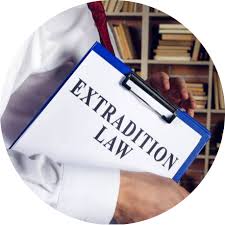The Comprehensive Guide to the Wrongful Death Lawsuit Process 376024391

The Comprehensive Guide to the Wrongful Death Lawsuit Process
Experiencing the loss of a loved one is one of the most traumatic events anyone can face. When such a loss is caused by the negligence or wrongful actions of another, it can lead to complicated emotions and questions about accountability. A wrongful death lawsuit can provide a path to justice for the deceased’s family and help alleviate some of the financial burdens stemming from the loss. In this article, we will explore the wrongful death lawsuit process step-by-step, ensuring that you are well-informed on what to expect. For an in-depth resource at any time, consider referring to wrongful death lawsuit process pantheonuk.org/the-wrongful-death-lawsuit-process-what-to-expect-and-how-to-prepare/.
Understanding Wrongful Death
Wrongful death occurs when someone dies due to the intentional or negligent actions of another party. This can happen in various situations, including car accidents, medical malpractice, workplace accidents, and criminal behavior. In such cases, the deceased’s family members may file a wrongful death claim against the responsible party. Generally, these claims aim to recover damages related to the loss, including lost wages, medical expenses, funeral costs, and pain and suffering experienced by the surviving family members.
Who Can File a Wrongful Death Lawsuit?
The laws governing wrongful death claims vary by state, but typically, the right to file a lawsuit is given to the closest relatives of the deceased. This may include spouses, children, or even parents, depending on the family structure. In some states, more distant relatives may also have the right to sue, but this is less common.
Key Steps in the Wrongful Death Lawsuit Process
1. Consultation with an Attorney

The first essential step in any wrongful death case is to consult with an experienced personal injury attorney. A qualified lawyer can provide a comprehensive assessment of your case, including the facts surrounding the death, potential defendants, and the likelihood of successfully recovering damages. It is crucial to choose an attorney with a proven track record in handling wrongful death cases.
2. Investigation and Gathering Evidence
Your attorney will begin an in-depth investigation. This often involves collecting evidence, interviewing witnesses, gathering medical records, and consulting experts. The aim is to establish the negligence or wrongful behavior that led to the death. This phase is critical as the stronger the evidence, the more likely the case will succeed.
3. Filing the Lawsuit
Once sufficient evidence has been gathered, the next step is to file the wrongful death lawsuit in the appropriate court. This involves submitting a complaint that outlines the details of the case, the grounds for legal action, and the damages being sought. Filing deadlines, known as statutes of limitations, vary by state, so ensure that your claim is filed within the required timeframe.
4. Discovery Phase
Following the filing, both parties will enter the discovery phase. During this period, each side exchanges relevant information and evidence related to the case. This can include documents, expert witness statements, and depositions. Discovery can be a time-consuming process, but it is essential for building a strong case.
5. Negotiation and Settlement
Many wrongful death cases are settled before going to trial. Your attorney will negotiate with the opposing party’s insurance company or legal team in an attempt to reach a fair settlement. If a satisfactory settlement is reached, the case will be resolved without a trial, allowing the family to receive compensation more quickly. However, if the parties cannot agree, the case will proceed to trial.
6. Trial
If the case goes to trial, both sides will present their arguments, evidence, and witness testimonies in front of a judge and jury. The trial process can be lengthy and emotionally overwhelming for the family. After hearing the case, the jury will deliberate and issue a verdict. If the jury finds in favor of the plaintiff, they will determine the amount of damages to be awarded.

7. Appeals
In some instances, the losing party may choose to appeal the verdict. Appeals can prolong the final resolution of the case, extending the emotional toll on the family. However, it is crucial to have a knowledgeable attorney who can navigate the appeals process if necessary.
The Importance of Timely Action
It is vital to act quickly when considering a wrongful death lawsuit. As mentioned earlier, there are statutes of limitations that limit the time frame in which you can file a claim. Delays can result in the loss of evidence and witnesses, negatively impacting the case. Therefore, don’t hesitate to reach out to a personal injury attorney to initiate the process.
Common Challenges in Wrongful Death Lawsuits
While seeking justice for a loved one is a noble cause, the wrongful death lawsuit process can be fraught with challenges. Some of the most common hurdles include:
- Proving Negligence: The burden of proof lies with the plaintiff. Demonstrating the defendant’s negligence or wrongful actions can be complex.
- Insurance Company Tactics: Insurance companies often employ aggressive tactics to minimize payouts. Having an experienced attorney can make a significant difference.
- Emotional Drain: The trauma of losing a loved one can be compounded during legal proceedings, making it emotionally challenging to navigate the lawsuit process.
Conclusion
A wrongful death lawsuit can provide significant relief and a sense of justice for families grappling with loss due to another’s negligence. Understanding the process helps prepare you for the journey, from the initial consultation with a lawyer to the trial and potential appeals. While the road ahead may be challenging, having the right legal representation can help families navigate these turbulent waters and seek the compensation they deserve.
If you or someone you know is considering a wrongful death lawsuit, remember that timely action and expert guidance are crucial to achieving a favorable outcome.